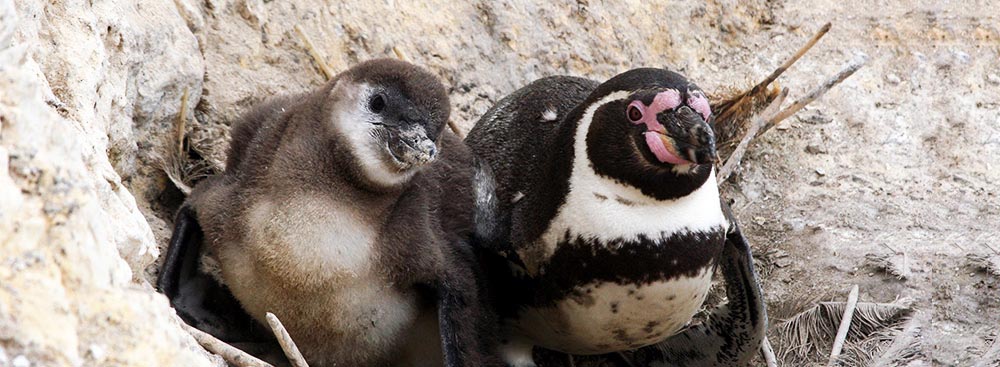
Reproductive success of the breeding population of Humboldt penguins (Spheniscus humboldti) of the Punta San Juan reserve is researched by quantifying the inter-annual differences in the number of successful eggs laid, chicks born and fledglings produced in the colony of penguins that live in the reserve of Punta San Juan in the long-term.
To accomplish this we evaluate the number of Humboldt Penguin chicks born during each of the two breeding peaks that have been described for this species, thanks to research conducted at the PSJ reserve. Data collection is done routinely through direct observation of nests, counting the number of chicks present in the two main beaches used by Humboldt penguins for breeding and doing routine nest checks at study beaches.
The annual production of chicks and seasonality of the reproductive peak is important because it serves as an indicator of the welfare of the population, which in turn is directly related to the environmental conditions of that year.